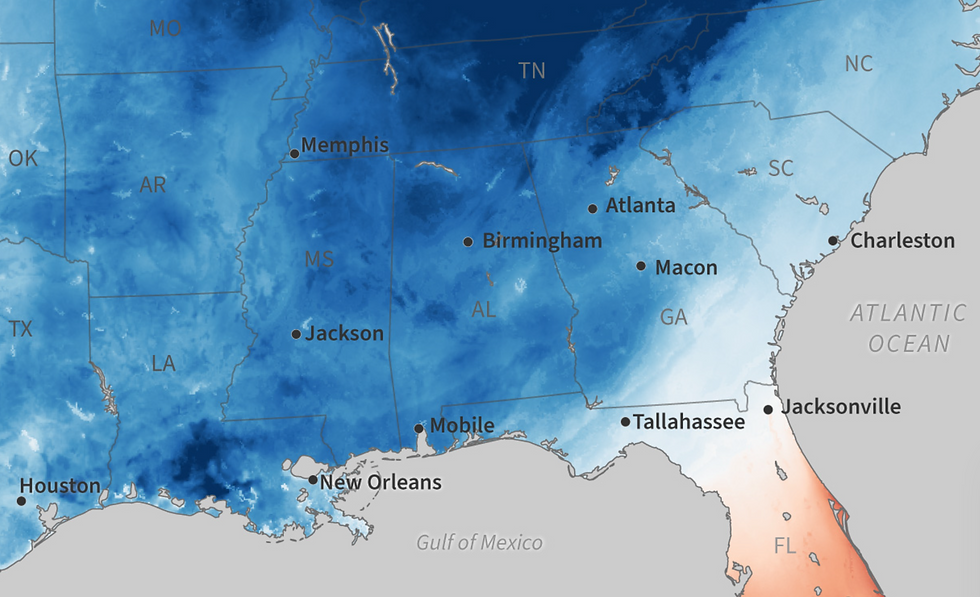Tariffs and Inflation: Why July 2025 CPI Remained Lower Than Expected
- Kimi

- 3 days ago
- 7 min read

Background: Tariff Policy and Inflation Expectations
High import tariffs generally raise the cost of foreign goods, which typically pushes consumer prices upward. Economists warned that President Donald Trump’s sweeping tariffs (including a 10% across-the-board import tariff plus higher rates on many countries) would fuel inflation. Some forecasts in early 2025 expected these tariffs to keep U.S. inflation “sticky” above 3%, adding up to 0.5 percentage points to the CPI within months. Indeed, by mid-2025 the average U.S. tariff rate had jumped to its highest level since 1933 (over 18% on imports), recalling historical parallels like the Smoot-Hawley Tariff of 1930. (Notably, Smoot-Hawley’s hefty duties coincided with deflation during the Great Depression, as collapsing demand outweighed tariff effects.) In theory, however, imposing tariffs should act like a tax on imports – causing a one-time bump in the price level as import costs rise, and potentially broader inflation if domestic producers also hike their prices in response.
By July 2025, inflation remained milder than many expected. The Consumer Price Index (CPI) in July was up 2.7% year-over-year, slightly cooler than the 2.8% economists had forecast. This matched June’s 2.7% rate and was far from any runaway spike. Even “core” inflation (excluding food and energy) was about 3.1% – elevated, but only a touch higher than June’s 2.9%. In other words, despite tariffs that by then touched goods from dozens of countries, overall inflation was merely moderate and lower than anticipated. This apparent contradiction – aggressive tariffs vs. tame CPI – prompted analysis from experts across news outlets, financial institutions, and think tanks.
Expert Explanations for the Tariff–CPI Disconnect
Economists and analysts have proposed several, often overlapping, reasons why Trump’s high tariffs did not send overall consumer inflation surging in mid-2025. Key mechanisms include:
Lagged and Partial Pass-Through: Tariff costs did not immediately show up in consumer prices. Many importers and retailers stockpiled inventories before the tariffs hit, allowing them to sell goods at pre-tariff prices for a while. This inventory cushion delayed price increases. Moreover, increased import costs must ripple through multi-stage supply chains – from wholesalers to retailers – which takes time. A broad consensus emerged that businesses initially absorbed a large share of the tariff costs instead of immediately passing them on. Firms were reluctant to lose customers with sudden price hikes, so they accepted lower profit margins in the short run. Analysts estimate only around two-thirds of the tariffs’ added costs were ultimately passed to consumers, meaning a substantial portion was eaten by companies or offset elsewhere. This delayed, partial pass-through helps explain why the CPI hadn’t spiked by July.
Consumer Demand and Substitution Effects: Tariffs can ironically dampen inflation by curbing demand. When imported products become more expensive, consumers often buy less or switch to alternatives, which blunts overall price pressures. In 2025, many of the tariff-hit items were discretionary goods (e.g. electronics, apparel) that shoppers could forego or replace with untariffed substitutes. Economists noted that U.S. consumers began cutting back on travel and big-ticket purchases as prices rose, a sign of weakening demand that put downward pressure on inflation. This dynamic echoed the 2018–2019 trade war, when higher import prices were largely offset by a drop in demand for those goods. In essence, tariffs acted as a tax that cooled spending, preventing a broader inflationary spiral.
Diluted Impact in the CPI Basket: The structure of the CPI itself muted the tariff effect. Services make up over 60% of U.S. consumer spending and dominate the index, whereas goods heavily reliant on imports comprise only about 10–15% of the CPI basket. Thus, even if tariffs caused sizable price jumps in certain imported goods, those moves barely budged the overall index. In fact, the only major CPI component rising sharply in spring 2025 was housing (rent), which is unaffected by tariffs. Meanwhile, energy prices were falling and offsetting some goods inflation. By May 2025, gasoline and other energy costs had dropped enough to lower the overall CPI, counteracting tariff-induced increases. Even within goods, data showed surprising trends: prices for some import-intensive categories (like durable goods and clothing) actually fell slightly in late spring 2025, contrary to expectations. This suggests that the tariff impact on those items was too small or too short-lived to overcome other deflationary factors in the CPI.
Incomplete Tariff Coverage and Policy Adjustments: Another reason inflation stayed lower than expected is that not all the threatened tariffs fully hit consumers. The Trump administration’s trade measures were broad, but in practice many got delayed, exempted, or negotiated down. For example, a planned round of steep tariffs on imports from China was postponed for further talks (and only a base 10% tariff was in effect on many goods). Tariffs on allies like Canada and Mexico were partly circumvented by trade agreement exemptions – over 80% of exports from those countries were exempt under USMCA rules. Dozens of other countries’ “reciprocal tariffs” were suspended or set at a relatively low base rate as negotiations continued. All these tweaks significantly blunted the immediate impact. In essence, by July 2025 the U.S. had not yet imposed the full brunt of the initially announced duties on consumers. The nonpartisan Yale Budget Lab noted that, even including all tariffs announced by mid-July, the effective average tariff rate (after people adjust buying habits) would be around 20% – which they estimated would raise consumer prices by only about 1.8% in the short run. Such a one-time price level bump is noticeable but hardly catastrophic. And as noted, a portion of even that increase was being absorbed or evaded through means like foreign suppliers eating costs or rerouting goods via lower-tariff countries.
Offsetting Macro Factors (Dollar and Energy): Broader economic forces also helped keep inflation in check despite the tariffs. One key factor was the strength of the U.S. dollar. When the U.S. imposes tariffs, imports tend to shrink, which can cause the dollar to appreciate (since less foreign currency is needed for trade). A stronger dollar makes remaining imports cheaper in dollar terms. Research indicates that in cases of unilateral U.S. tariffs, currency appreciation can offset 30–50% of the tariffs’ cost for consumers. In 2025, the dollar did rise on trade tensions, softening the blow of higher import taxes. Additionally, global commodity trends and domestic policy offset cost pressures. President Trump’s push to expand U.S. oil and gas output (“Drill, baby, drill”) boosted global petroleum supply and helped drive crude oil prices down below $70/barrel by mid-2025. As a result, gasoline and energy costs fell significantly, directly lowering the CPI’s energy index. This energy price relief “offset some of the price increases potentially caused by tariffs” and provided “crucial support” for the moderate inflation readings. In the CPI reports for June and July, cheaper gas, airfares, and hotel rates were noted as offsetting the pricier tariff-affected goods. In short, any upward price pressures from tariffs were largely neutralized by countervailing forces like currency shifts, cheaper fuel, and slowing demand.
Historical Context and Cross-Checks
The interplay of these factors shows why tariffs did not unleash the expected inflation. Historical experience supports this nuanced outcome: tariffs often cause a one-time price level increase rather than persistent inflation, especially if central banks and consumers respond. The Federal Reserve in 2025 treated the tariff-driven cost boosts as a transitory “price level shock” – something to monitor but not overreact to with aggressive tightening. Meanwhile, weakening economic conditions due in part to the trade war (e.g. a marked slowdown in job growth) signaled that demand-side drag was real. As an extreme historical example, the highest U.S. tariffs of the 20th century (Smoot-Hawley) coincided with falling prices (deflation), because the Great Depression crushed consumer spending. While 2025’s situation is far less dire, the lesson is similar: tariffs alone do put upward pressure on prices, but that effect can be overwhelmed by broader economic forces.
Multiple analysts from different institutions concur on the core explanation. UBS economists observed through spring 2025 that tariff effects were only just beginning to “trickle through” in certain categories (like apparel and appliances), consistent with a delayed impact. Investopedia’s review of the July data highlighted that companies had initially shielded consumers by stockpiling goods and could only pass on a fraction of the cost increase. A detailed ANBOUND think-tank analysis noted that by focusing on overall CPI, one might miss that tariff-related price upticks were concentrated in specific products and largely offset elsewhere. Even the White House’s own rationale tacitly acknowledged these offsets: officials argued deregulation and alternative supply sources would contain price growth. In sum, cross-validation across news reports, economic research, and market commentary paints a consistent picture. Tariff hikes in early 2025 did exert upward pressure on goods prices, but this was mitigated by strategic behavior (stockpiling, sourcing shifts), a services-heavy economy, and countervailing economic trends. The result by July 2025 was inflation running only in the high-2% range – not the surge one might have expected from the size of the tariffs, and slightly below forecasts.
Conclusion
Despite unprecedented tariffs on foreign goods, U.S. inflation in July 2025 remained modest and below expectations due to a combination of delayed pass-through, weakened demand, compositional effects, and offsetting factors like a strong dollar and falling energy costs. History and expert analysis suggest that tariff-driven price increases were largely a one-time adjustment that got swamped by broader deflationary forces. In practical terms, American consumers saw only selective price hikes (on certain imports) while overall cost-of-living increases stayed muted. This outcome underscores that high tariffs, while inflationary in isolation, can coincide with lower-than-expected CPI readings when businesses and households adapt and the macroeconomic environment provides offsets. In other words, the feared inflation tsunami from Trump’s trade war had, by mid-2025, manifested as more of a gentle ripple, leaving the Fed and consumers with a paradoxically calmer inflation picture than initially predicted.


